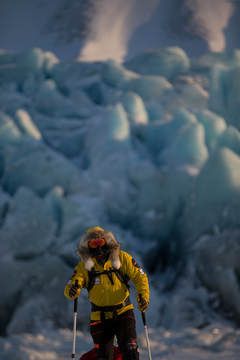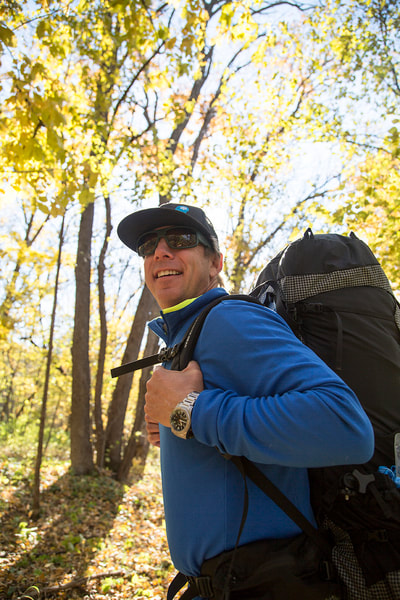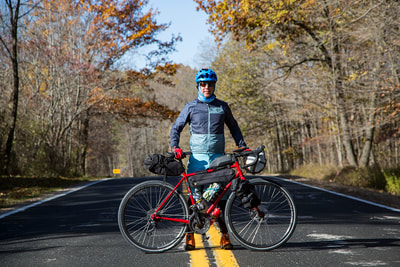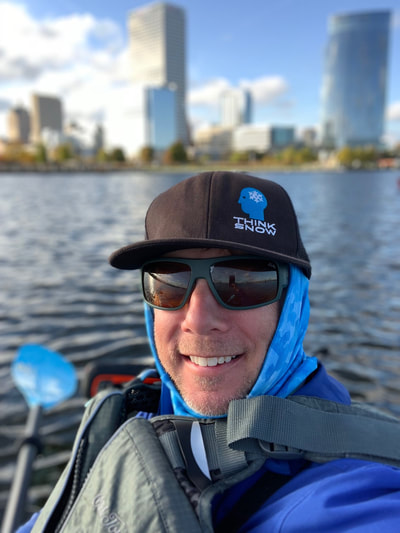
As a biology major in college in Minnesota, Eric Larsen and his friends would make up challenges with the terrain that was readily available. They would say “Hey, let’s paddle across this lake, then bike to this city and back again and see how fast we can do it. Actually, let’s make it harder by doing it at night.” There were no sharp granite peaks or sub-zero temperatures, but it was a challenge, out in the fresh air, enjoying the peacefulness of nature around them.
These seemingly random self-imposed challenges would lead to Eric becoming the first human being to reach the North Pole, South Pole and the top of Mount Everest in one year. Not bad for a midwestern kid from Cedarburg, Wisconsin. Growing up, his dad was the beloved director of Riveredge Nature Center, so an environmental ethic and an appreciation for nature were just an automatic part of daily life.
He recently returned home from Colorado to do a self-imposed “WisconsATHON” challenge where he hiked, biked and kayaked for 9 days across the state to raise money for children's’ programs at Riveredge. As someone who grew up going there on school field trips, I reached out to Eric and we had the opportunity to grab a coffee and talk about sustainability in the outdoor industry.
One of Eric’s goals with his adventures is to raise awareness about climate change. He said most people don’t know that Antarctica isn’t just snow and ice, it’s a land mass that reaches an altitude of about 9,300 feet at the South Pole, and over 16,000 feet at its highest point at Mount Vinson. On the other hand, the North Pole contains no actual land, just shifting sheets of ice that doesn’t get much thicker than 3 or 4 feet. He has seen firsthand how our climate has been altered as the ice sheets get thinner and less predictable.
He’s also a big believer in sustainability when it comes to products in the outdoor industry, since the manufacturing methods required to make our gear have an impact on the very environment we love to explore. So far it seems like the majority of innovations have been in creating better ways to make products that have the same level of performance. For instance, there have been ways to make synthetic down insulation more environmentally friendly, and there is the Responsible Down Standard to make sure the geese, whose feathers keep us warm, are treated humanely, but as of yet there isn’t an option that has been more sustainable AND performed better. For Eric, when it’s 50 degrees below zero in the Arctic he still relies on tried-and-true natural down to keep him alive and as comfortable as possible.
Some of the companies that sponsor Eric are perfect examples of sustainability in action. For example:
- MSR makes the camp stoves he uses to cook his food while out in the frozen tundra. They draw on their industry expertise through their Global Health program to bring clean water to people that need it, advance technological innovation, support STEM (Science, Technology, Engineering, Math) programs for children, and even work to stop the spread of Ebola through their Community Chlorine Maker.
- Allied Feather & Down worked to develop the Responsible Down Standard to make sure the insulation is harvested ethically. This means that the geese and ducks are not live-plucked or force-fed, but are treated humanely.
- Zeal Optics uses a plant-based plastic derived from the castor plant in their sunglasses and goggles instead of petroleum.
- Helly Hansen is transparent in its supply chain, uses the bluesign system to certify the environmentally-friendly nature of its fabrics, and works to reduce toxic PFCs that are common in most waterproof fabrics.
Sustainability is also about consumption. It’s been said that the most sustainable product is the one that you don’t buy. For a guy whose life literally depends on the reliability of the clothing he wears, the quality of gear and how long it will last him is of utmost importance. Being in the industry for many years, he’s seen how the need to constantly push new products can lead to overconsumption. Some of the most sustainable gear is the clothing that can be repaired and continue to be used because it was constructed with quality materials and made to last.
Eric Larsen is a man who has made a career out of putting himself in the middle of our planet’s most extreme environments. He’s not doing it to check it off a bucket list or get more instagram followers, he has a deep appreciation for nature and the solitude that can accompany it. Even on his trek across Wisconsin some of his favorite moments were when he was by himself and saw the various native wildlife that crossed his path.
With parks in cities of every size, he believes that we all have the opportunity to get out into nature, and for him the power of adventure to connect with others is a force for making the world a better place.




 RSS Feed
RSS Feed